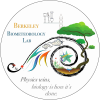Reports
Contents
| Title: | Sherman Wetland - NDVI (SRS, Arable, Planet) | ||||||||||||||||||||||||||||
| Date: | 2017-06-23 - 2021-04-15 | ||||||||||||||||||||||||||||
| Data File: | SW_NDVI.csv | ||||||||||||||||||||||||||||
| Refers to: | SW,882103059,2046503404,A001911 | ||||||||||||||||||||||||||||
|
Various sensors measuring NDVI have been installed across the Delta sites over the last several years. At some sites, the SRS sensors from Decagon/METER have been drifting low, so I wanted to compare them with other NDVI measurements.
For some sites with I also compared GCC with the various NDVI values to see how much GCC values varied year over year. Photos were taken by a variety of cameras: Netcam Stardot cameras (the official camera of the Phenocam Network®), Canon point-and-shoot cameras with custom firmware, or a Raspberry Pi camera. I used Joe's datafetch tool to calculate daily average mid-day values of NDVI and GCC from the various sensors. Mid-day values included data from 11:00 to 13:00, 5 values a day. I despiked the data in Excel.
See reports for other Delta sites here: East Pond / Sherman Wetland Temp Tower (both sites had same set of SRS sensors) Twitchell Alfalfa / Sherman Barn (both sites had same set of SRS sensors) Â Â
Â
Arable image of Sherman Wetland on June 29, 2019 (DOY 180). Lighter colors are higher NDVI and darker colors are lower NDVI (e.g., roads, open water). I used a sampling area of 9 pixels, marked by the red box. Figure 1. SRS NDVI is suspicious. The NDVI peak decreases year over year, becoming negative in 2020. The SRS data starts to diverge from the broadband NDVI at the start of April 2018. The PL data matches during 2017-2018 winter, but not during 2018-2019 winter, so further hints that the SRS sensor had already started decaying by the end of 2018. Â Figure 2. Incoming Red and NIR bands from SRS and Arable sensors. I need to investigate the Arable data further--it drops suddenly in August 2020. The SRS bands look reasonable. Â Figure 3. Outgoing Red and NIR bands from SRS and Arable sensors. The SRS 810out band is decaying and the 650out band looks reasonable. Â Figure 4. Red reflectance from SRS, Arable, and Planet data. SRS reflectance values are higher than Arable or Planet values. Â Figure 5. NIR reflectance from SRS, Arable, and Planet data. SRS NIR reflectance is decaying because of the 810out band. Â
Figure 6. Linear regression of various NDVI data at SW. The multiple clusters in the regressions make me think the SRS sensor is decaying because different groups of SRS data have different relationship with the Arable and PL data. Â
Figure 7. Linear regression of PL and SRS NDVI data at SW using data 2018-01-01 to 2018-03-31 only. Not many points. R2=0.6. Â Figure 8. Linear regression of SRS and Broadband NDVI at SW using data 2017-06-23 to 2018-03-31. Still messy but at least there are more points. Similar to the PL regression, R2=0.6. Â Figure 9. Sherman Wetland data with corrected SRS data. I used data from the first half of 2018 to make the regression and applied the correction to data from 2018-07-01 and onwards. |
|||||||||||||||||||||||||||||
| |


